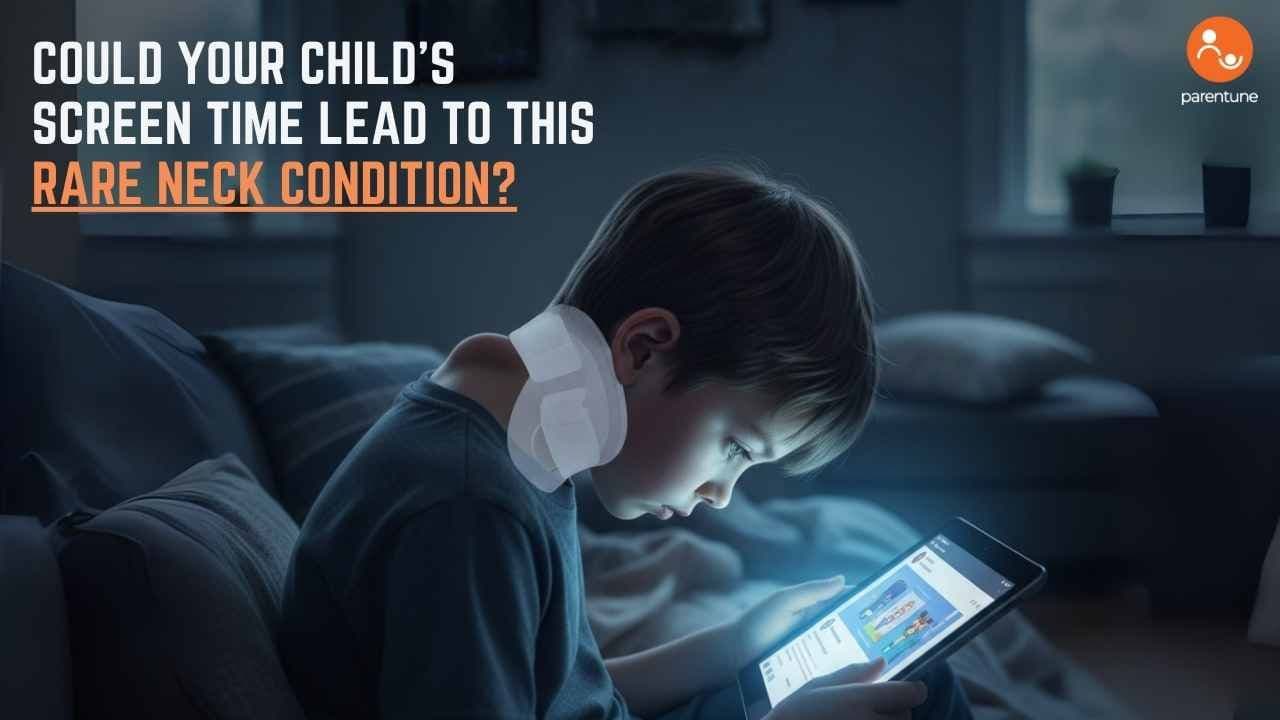eyecare-&-vision
Could Your Child’s Screen Time Lead to This Rare Neck Condition?

Published: 09/09/25
Updated: 09/09/25
A 25-year-old Japanese man developed a severe and rare condition called Dropped Head Syndrome (DHS) after years of gaming and looking down at his phone. Doctors reported he eventually lost the ability to lift his head due to neck muscle degeneration.
When he took treatment, his head drooped forward permanently. This made basic movements nearly impossible. It took surgery and months of physiotherapy just to regain minimal function.
What Is Dropped Head Syndrome (DHS)?
Dropped Head Syndrome is a neurological or muscular disorder characterized by severe weakness of the neck extensor muscles. This leads to an inability to hold the head upright. This is emerging due to prolonged forward-head posture from screen use.
Doctor Q&As from Parents like you
How Screen Time Triggers This Condition in Young Adults & Children
Experts have always warned about tech neck or text neck, where sustained forward head bending strains cervical muscles, discs, and ligaments. At just a 60° tilt, which is common when looking at smartphones, the cervical head load can increase to over 27 kg. This puts tremendous stress on the neck.
You may also like to read:
Why Parents Should Take Note
Keep a thorough watch even on the minute symptoms. Stiffness, pain in the neck or upper back, and head tilting forward after long screen sessions. All these are signs that need immediate attention.
Tips for Parents: Protecting Neck Health Early
1. Watch Screen Habits Closely
Ensure the child takes 20 minutes break after every 20 minutes if the screen exposure is for a longer span. Teach children to hold screens at eye level instead of bending their necks.
2. Promote Screen-Free Zones & Times
Set specific device-free times at home, like meal and family time. Create zones in the house where screens aren’t allowed like bedrooms or playrooms.
3. Encourage Movement & Breaks
Don’t let screen hours take over physical activity. Even five minutes of stretching can relieve muscle stress.
4. Use Ergonomic Tools
Let children use stands to hold the screen upright. For longer gaming sessions, use ergonomic chairs as they are designed with proper neck and back support.
Health Warnings & Broader Screen-time Risks
Doctors across India are reporting a surge in serious health issues from excessive screen time. This includes vision strain, sleep disruption, and even early ADHD-like symptoms in teens and younger children.
Paediatricians in Hyderabad have termed it as virtual autism, where children exposed to too much screen and too little real-world interaction show delayed speech, poor social skills and short attention spans.
If even a healthy 25-year-old gamer can develop a debilitating condition like DHS, our children are still growing and are at greater risk. Prevention today can mean a lifetime of stronger bodies for the next generation.
Be the first to support
Be the first to share
Related Blogs & Vlogs
No related events found.